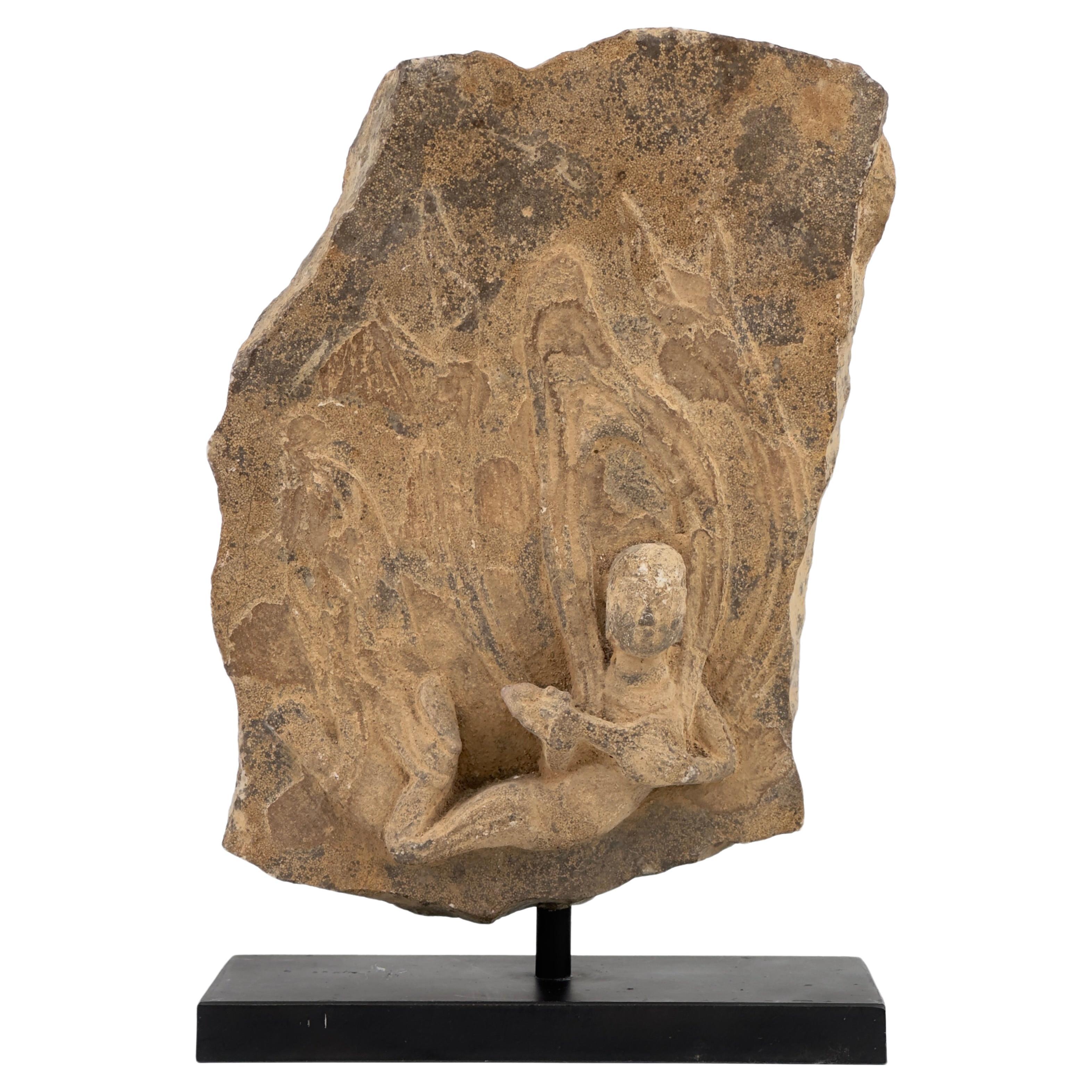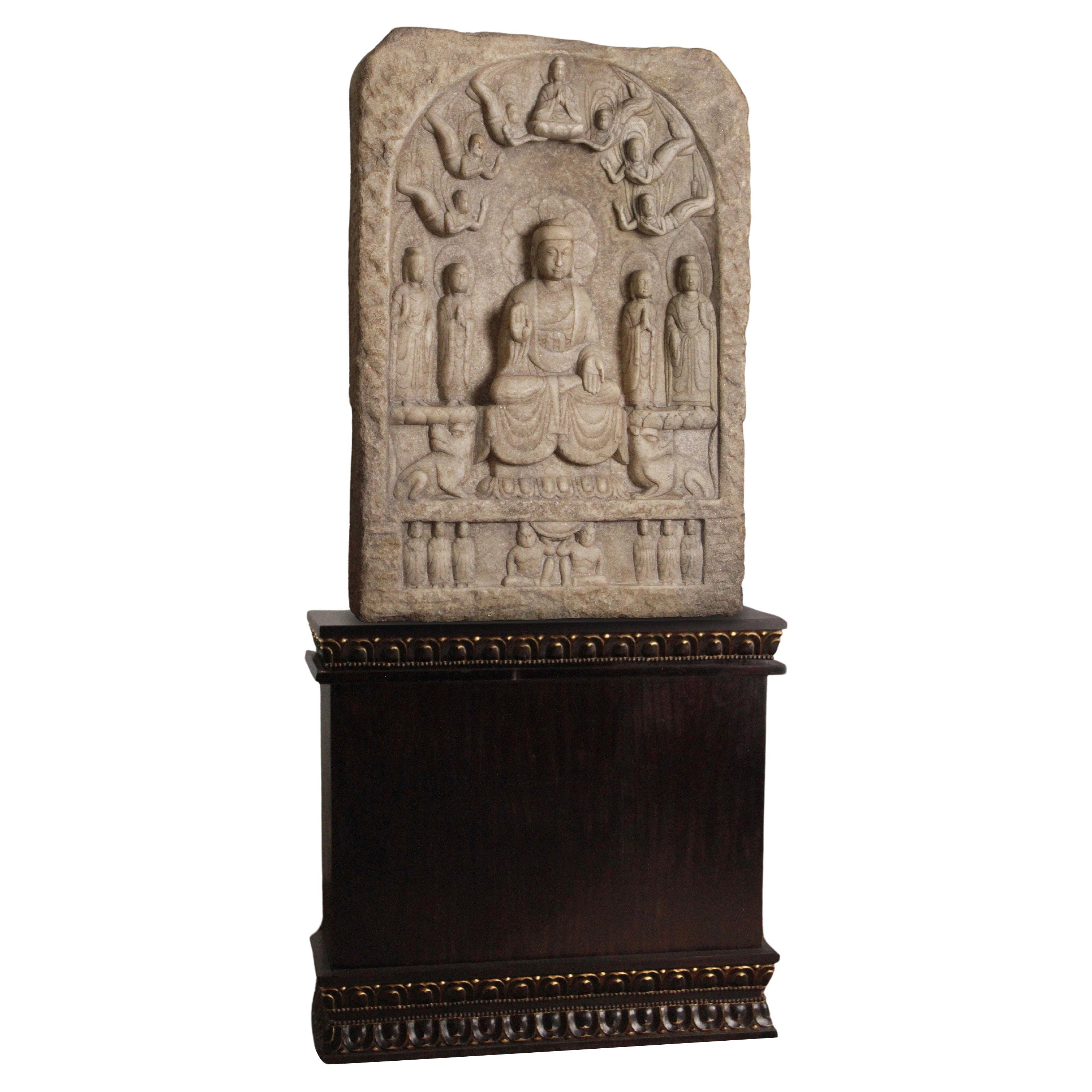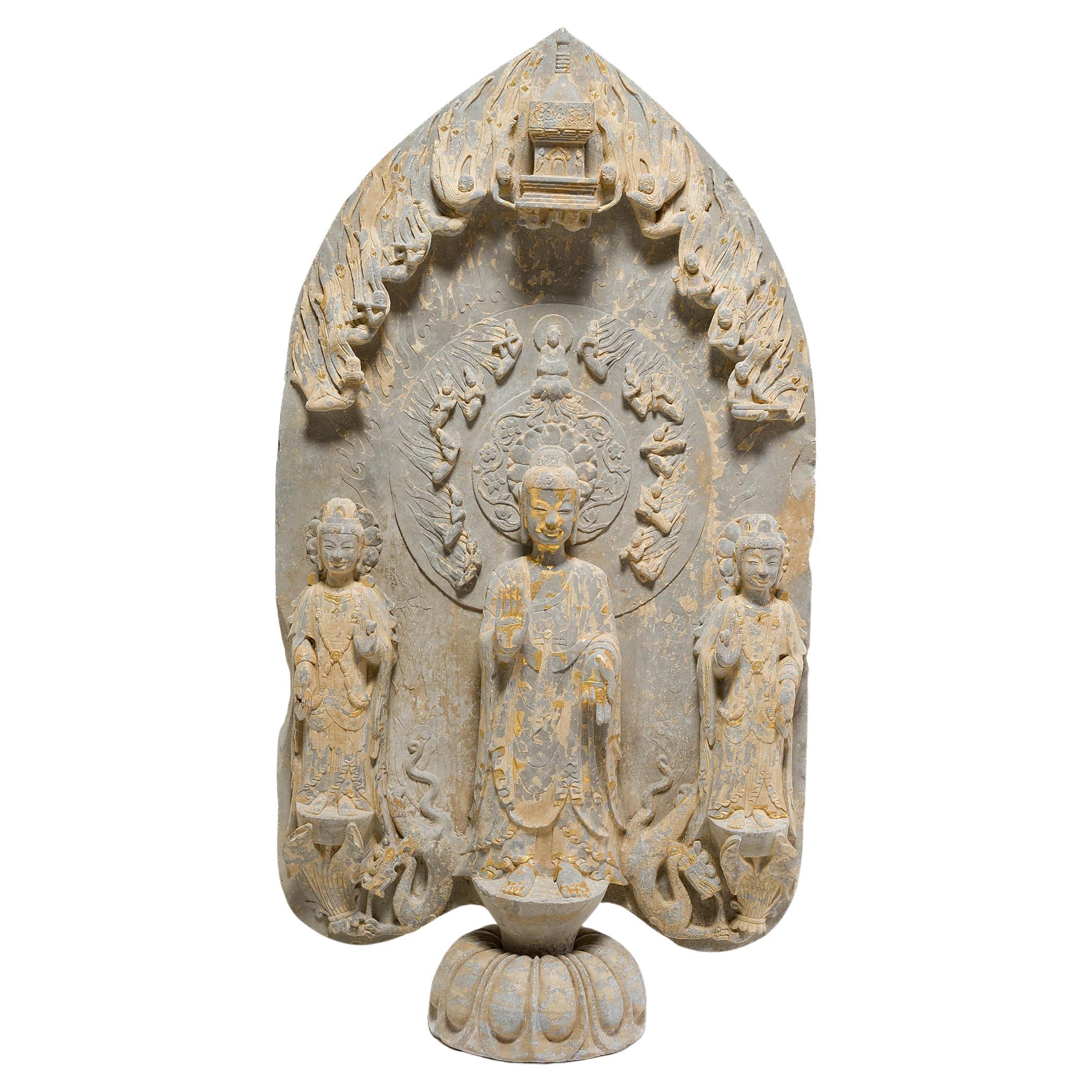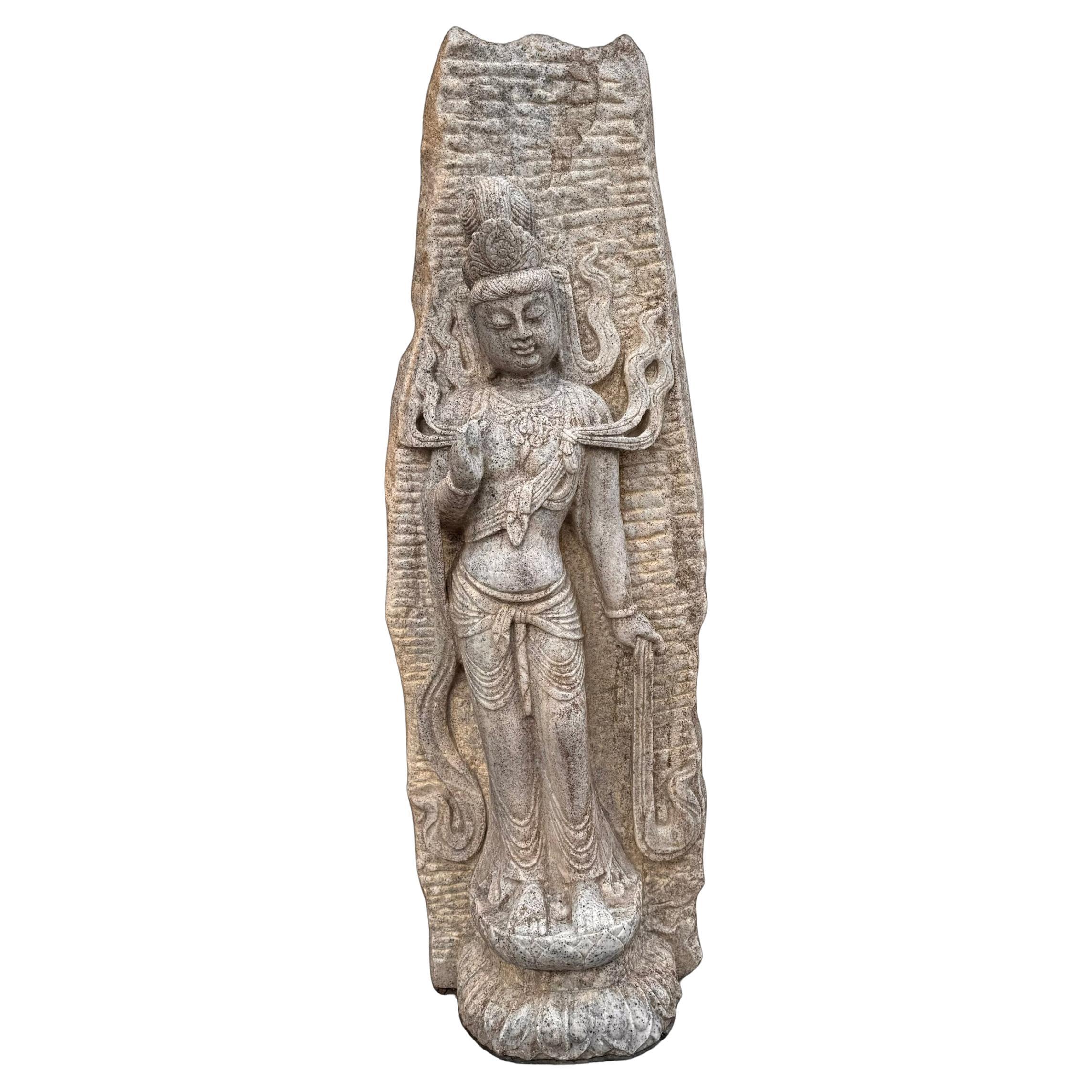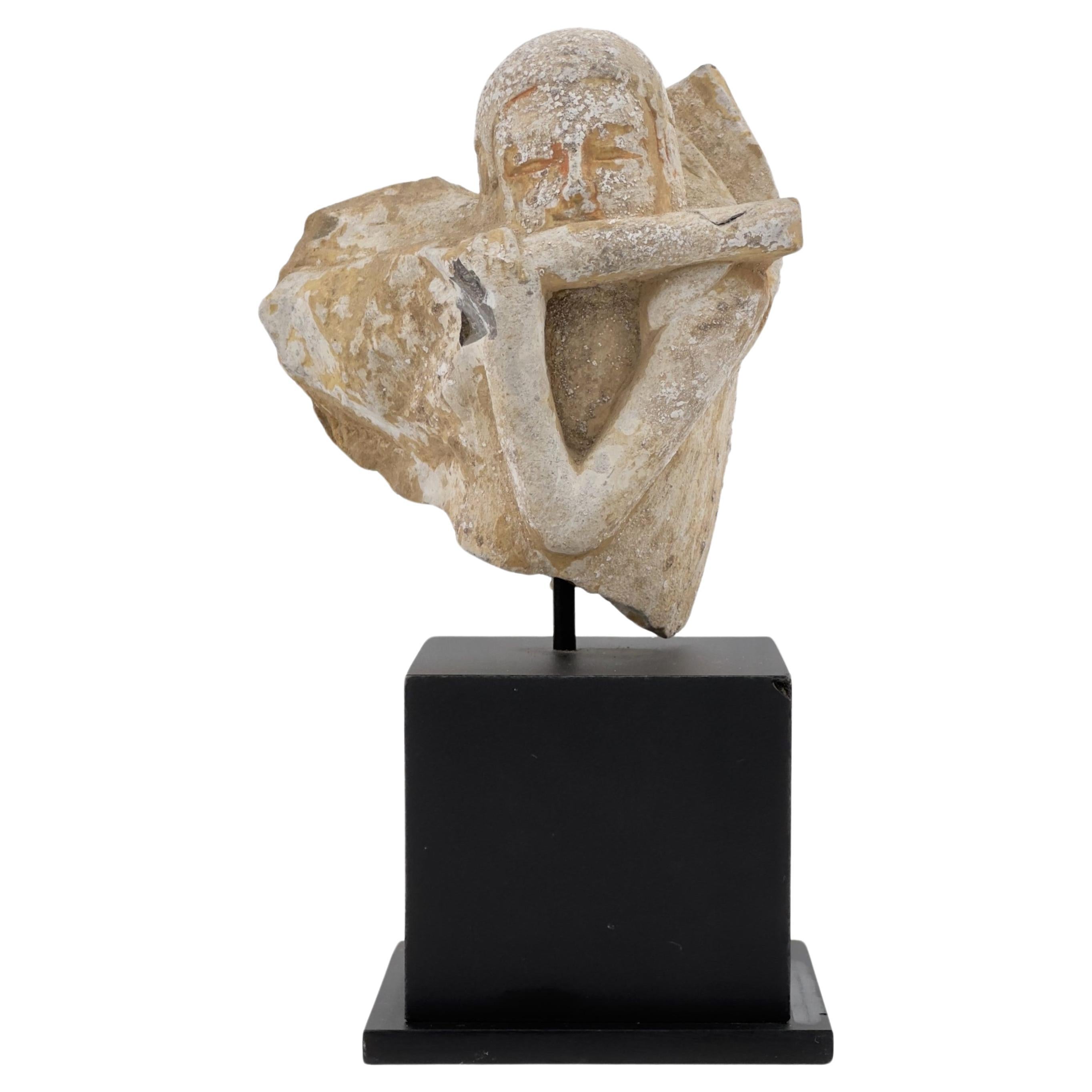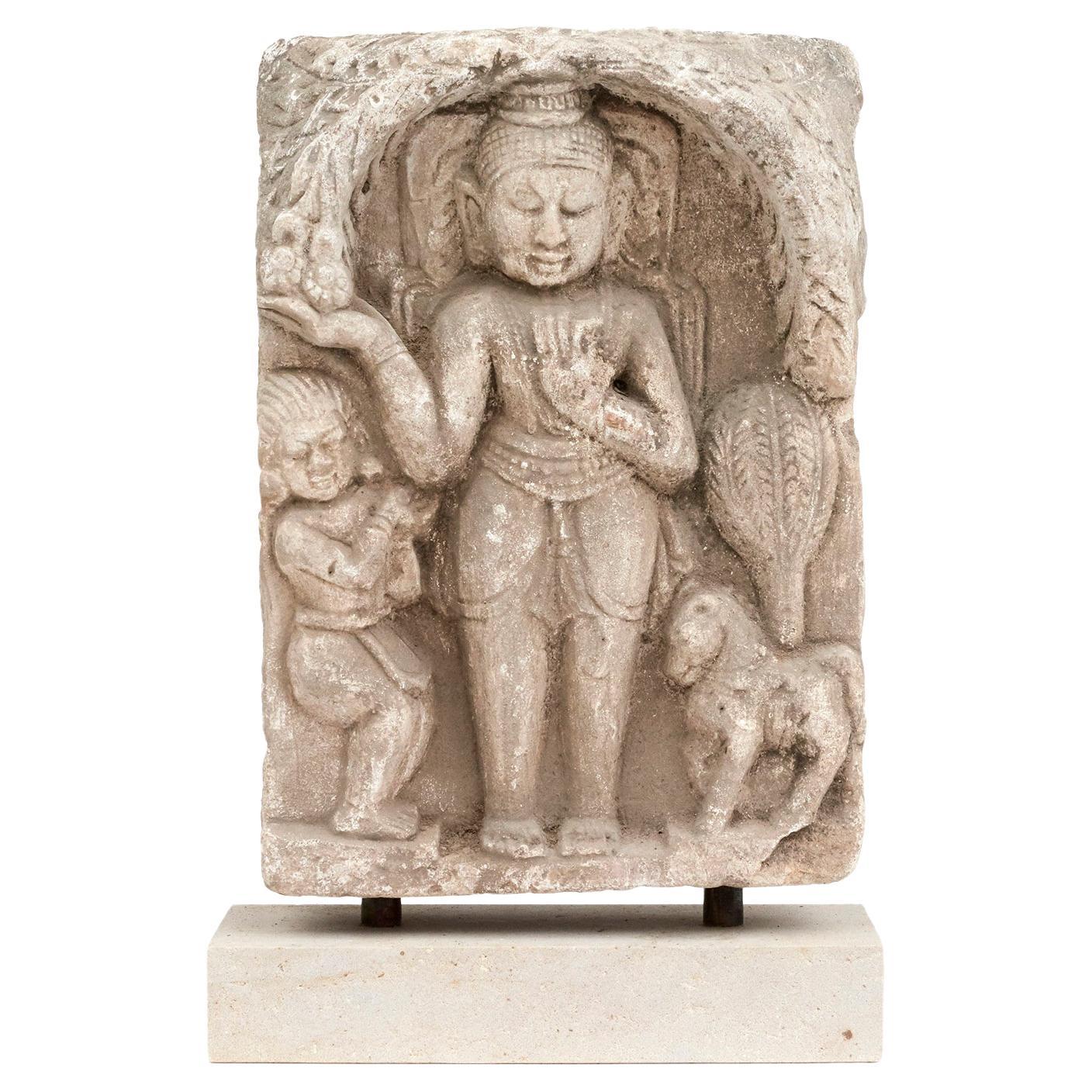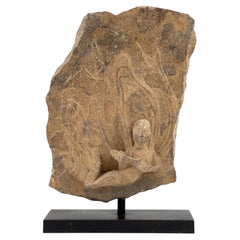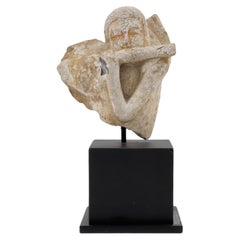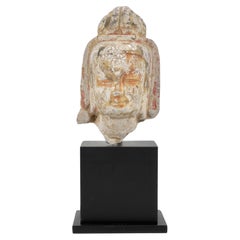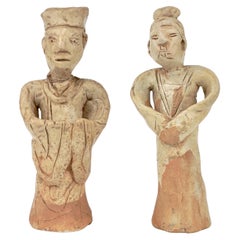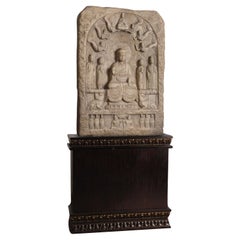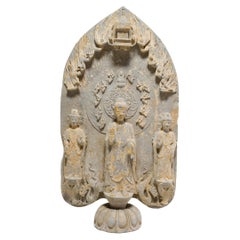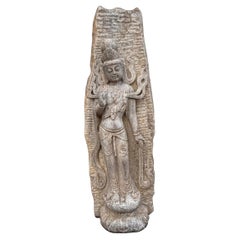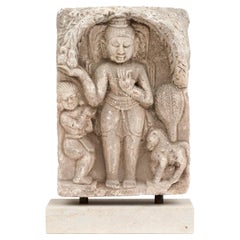Items Similar to Heavenly Beings Carved Limestone Stele Fragment, Northern/Eastern Wei Dynasty
Want more images or videos?
Request additional images or videos from the seller
1 of 13
Heavenly Beings Carved Limestone Stele Fragment, Northern/Eastern Wei Dynasty
$6,435
$9,90035% Off
£4,882.73
£7,511.8935% Off
€5,582.97
€8,589.1835% Off
CA$8,987.95
CA$13,827.6235% Off
A$9,993.38
A$15,374.4335% Off
CHF 5,217.99
CHF 8,027.6835% Off
MX$121,643.74
MX$187,144.2135% Off
NOK 66,579.28
NOK 102,429.6735% Off
SEK 62,381.61
SEK 95,971.7135% Off
DKK 41,666.70
DKK 64,102.6135% Off
Shipping
Retrieving quote...The 1stDibs Promise:
Authenticity Guarantee,
Money-Back Guarantee,
24-Hour Cancellation
About the Item
Flying two heavenly beings depicted in the stone. They are celestial beings called an Apsara. While having the same fragment and shape, another work I uploaded exhibits small dots on surface due to differences in conditions. This is primarily the result of an oolitic silica structure or oolites, which typically occurs when ancient arrowheads are exposed to moisture in the soil under specific conditions, usually over the course of more than a thousand years. The black stand was made in Hong Kong at the time of the acquisition.
Date : Northern Wei/Eastern Wei Dynasty(386–550)
Size : 25.5cm (Height) x 14cm(diameter)
Provenance : Acquired in late 1990s from Hongkong
Reference :
1) Sotheby's New York 20 March 2018 - Jingyatang Treasures Of Chinese Buddhist Sculpture - Lot 202
(Price realised : 1,335,000 USD / Type : Related)
2) The MET - Accession Number: 19.16
3) Art Gallery NSW - Accession number 128.1988
4) Sotheby's New York 19 March 2007 - Fine Chinese Ceramics And Works Of Art, Including Property From The Collection Of The Albright-Knox Art Gallery, Buffalo, New York
(Price range : 30,000-40,000 USD / Type : Related)
* Northern Wei period Stone Statue
The Northern Wei period (386-534 CE) marks a significant era in Chinese history, particularly noted for its development of Buddhist art. The Northern Wei dynasty, established by the Tuoba clan of the Xianbei, a Turkic people, controlled Northern China and witnessed the widespread dissemination and flourishing of Buddhism within its territory.
Sculptures from the Northern Wei period predominantly depict Buddhist figures, including Buddhas, Bodhisattvas, and Arhats, reflecting the popularization of Buddhist faith. These stone sculptures were commonly found in temples, caves, and tombs, serving both religious and decorative purposes. The art of this era showcases a unique blend of Chinese stylistic elements with those of Indian and Central Asian Buddhist art, indicating the cultural and religious exchanges of the time.
Northern Wei sculptures are celebrated for their intricate craftsmanship and expressive detail. The rarity of Northern Wei sculptures lies in their historical significance as early examples of Buddhist art in China and their unique blend of Chinese and foreign artistic influences, making them invaluable for both cultural and academic studies. Their survival through centuries further adds to their scarcity and value.
* Apsara
Apsaras, celestial beings gracing the skies of ancient lore, are often heralds of good fortune and the embodiment of positive energy. They float through the heavens with such grace and beauty that their presence is said to uplift the spirit and inspire joy in the hearts of those who witness them.
In many Asian cultures, Apsaras are regarded as benevolent spirits of water and clouds, thought to bring nourishing rains to sustain life and fertility to the earth. Their dances, celestial melodies, and elegant movements are believed to soothe the soul and bring harmony to the world.
Depicted with ethereal elegance, Apsaras are not merely dancers; they are muses of creativity and the arts. Artists, musicians, and poets seek inspiration from these divine figures, hoping to capture a fragment of their heavenly artistry.
In the presence of Apsaras, it's said that one's luck is sure to turn for the better, as they are symbols of good fortune. Their likeness adorns temples and palaces, not only as decoration but as a wish for prosperity, success, and the positive flow of energy.
Embracing the qualities of Apsaras in one's life can be seen as an aspiration to live in harmony with the beauty of nature, the arts, and the joyful melodies of existence. They remind us of the delight found in the natural world and encourage us to appreciate the everyday dance of life with a light heart and hopeful spirit.
- Dimensions:Height: 10.04 in (25.5 cm)Diameter: 5.52 in (14 cm)
- Style:Han (Of the Period)
- Materials and Techniques:
- Place of Origin:
- Period:
- Date of Manufacture:4-6th Century
- Condition:Minor fading.
- Seller Location:seoul, KR
- Reference Number:1stDibs: LU9577238673112
About the Seller
4.8
Gold Seller
Premium sellers maintaining a 4.3+ rating and 24-hour response times
Established in 1999
1stDibs seller since 2023
38 sales on 1stDibs
Typical response time: <1 hour
- ShippingRetrieving quote...Shipping from: seoul, Korea South
- Return Policy
Authenticity Guarantee
In the unlikely event there’s an issue with an item’s authenticity, contact us within 1 year for a full refund. DetailsMoney-Back Guarantee
If your item is not as described, is damaged in transit, or does not arrive, contact us within 7 days for a full refund. Details24-Hour Cancellation
You have a 24-hour grace period in which to reconsider your purchase, with no questions asked.Vetted Professional Sellers
Our world-class sellers must adhere to strict standards for service and quality, maintaining the integrity of our listings.Price-Match Guarantee
If you find that a seller listed the same item for a lower price elsewhere, we’ll match it.Trusted Global Delivery
Our best-in-class carrier network provides specialized shipping options worldwide, including custom delivery.More From This Seller
View AllApsara Carved Limestone Stele with Extremely Rare 'Oolitic silica', Wei Dynasty
Located in seoul, KR
The small dots apparent on the surface of this stone stele are indicative of an oolitic silica structure or oolites formed in what is known as "Oolitic chert." The same phenomenon can also be observed in the Tang Dynasty Limestone Stele at the Asian Art Museum in San Francisco. This formation occurs gradually over the course of thousands to several hundred thousand years within the soil or sea. Similar structures are commonly found in ancient fossils or arrowheads. Ancient peoples chose certain types of stones for tool-making, preferring materials that were easier to work with and could be sharpened effectively. This predilection is believed to be the reason why oolitic silica structures are frequently found in ancient arrowheads.
The development of these oolitic silica structures is a very slow process involving the accumulation of siliceous layers around particulates. This phenomenon, where silica reacts with water to form layers around a nucleus, occurs under specific chemical and physical conditions. Typically, it takes thousands to hundreds of thousands of years for silica to gradually accumulate in layers through contact with moisture, a process that requires a precise harmony of many variables, including chemical conditions, temperature, pressure, pH, and biological activity.
It is known that no other stele with such a silica structure has been identified to date, serving not only as evidence of its authenticity but also significantly enhancing the rarity of this piece.
This stele appears to be a stone sculpture of an apsara, a celestial nymph from Buddhist and Hindu traditions. Despite its fragmentary state, the sculpture conveys grace and movement. The apsara is captured in a dynamic pose, perhaps once part of a larger tableau, playing a flute-like instrument.
The black stand was made in Hong Kong at the time of the acquisition.
Date : Northern Wei/Eastern Wei Dynasty(386~550)
Size : 22cm (Height) x 16cm(diameter)
Condition : Good (oolites dots on surface)
Provenance : Acquired in late 1990s from Hongkong
Reference :
1) Sotheby's New York 20 March 2018 - Jingyatang Treasures Of Chinese Buddhist...
Category
Antique 15th Century and Earlier Hong Kong Han Antiquities
Materials
Stone, Limestone
$14,950 Sale Price
50% Off
Celestial being(Apsara) Stone Statue, Northern Wei-Tang Dynasty
Located in seoul, KR
This statue appears to be a stone sculpture of an apsara, a celestial nymph from Buddhist and Hindu traditions. Despite its fragmentary state, the sculpture conveys grace and movement. The apsara is captured in a dynamic pose, perhaps once part of a larger tableau, playing a flute-like instrument. The facial features are serene yet expressive, with faint traces of pigmentation hinting at the sculpture's original polychromy. The black stand was made in Hong Kong at the time of the acquisition.
Date : Northern Wei...
Category
Antique 15th Century and Earlier Hong Kong Tang Antiquities
Materials
Stone, Limestone
$4,450 Sale Price
50% Off
Stone Head of Bodhisattva, Northern Wei-Tang Dynasties
Located in seoul, KR
The face with downcast eyes and a smile, the hair swept up behind the pendulous ears into a high topknot. Faint traces of pigmentation hinting at the sculpture's original polychromy. The black stand was made in Hong Kong at the time of the acquisition.
Date : Northern Wei-Tang Dynasty(5-8th century)
Provenance : Acquired in late 1990s from Hongkong
Reference :
1) Sotheby's London 13 May 2015 - The Soul Of Japanese Aesthetics – The Tsuneichi Inoue Collection - Lot 18
(Price realised : 17,500 GBP / Type : Closely related)
2) Sotheby's New York 26 September 2023 - CHINA / 5000 YEARS - Lot 1156
(Price realised : 8,890 USD / Type : Closely related)
* Stone Head of Bodhisattva...
Category
Antique 15th Century and Earlier Hong Kong Tang Antiquities
Materials
Limestone
$5,196 Sale Price
60% Off
Two Incised Sandstone Mingqi, Five Dynasties and Ten Kingdoms period(907-979)
Located in seoul, KR
Figures from this era tend to be simpler and more utilitarian, reflecting the instability and regional diversity of the time. These pottery figures often unglazed or painted with bas...
Category
Antique 15th Century and Earlier Hong Kong Antiquities
Materials
Sandstone
$1,176 Sale Price
30% Off
Gate Pillar, Han Dynasty(206BC-220AD)
Located in seoul, KR
The Han Dynasty gate pillar held by the Asian Art Museum in San Francisco and this gate pillar are the only known examples of their type worldwide, highlighting its extraordinary rar...
Category
Antique 15th Century and Earlier Hong Kong Han Antiquities
Materials
Earthenware
$5,985 Sale Price / set
25% Off
Two Pottery Kneeling Figures of Attendant, Han dynasty
Located in seoul, KR
The statuette shows traces of the original red, black, and white pigmentation. Ceramic statuette from the han Dynasty, depicting two court people, probably a musician. They are dress...
Category
Antique 15th Century and Earlier Hong Kong Han Antiquities
Materials
Pottery
$1,937 Sale Price / set
35% Off
You May Also Like
Buddhist Stele in Marble from Hebei Province, China w/Custom Stand
Located in Austin, TX
This exquisite stele, hewn from pristine marble, beckons visitors with its ethereal presence. The scene was originally commissioned in 537 by Yuan’ning, prince of the Gaoping branch ...
Category
20th Century Chinese Qing Sculptures and Carvings
Materials
Marble
$15,000 Sale Price
40% Off
Chinese Gilt Limestone Stele of Maitreya Buddha
Located in Chicago, IL
This intricate limestone stele of a standing buddha likely depicts Maitreya, the Buddha of the Future. The only Buddhist divinity revered as both a bodhisattva and a Buddha, Maitreya is prophesied to return to Earth some time in the distant future and continue the historic Buddha's teachings of the Dharma. Like the historic Shakyamuni Buddha, Maitreya is a compassionate being devoted to showing the path to enlightenment.
Carved in the style of sixth century Chinese statuary...
Category
20th Century Chinese Qing Sculptures and Carvings
Materials
Limestone
Large Chinese Carved White Stone Temple Stele Sculpture of a Guan Yin
Located in Bradenton, FL
Carved white stone temple sculpture of a Bodhisattva featuring exquisite craftmanship and attention to detail. Bodhisattvas were enlightened beings who chose to remain in the cycles ...
Category
20th Century Chinese Chinese Export Sculptures and Carvings
Materials
Stone
15-16th Century Sandstone Standing Buddha Sculpture
Located in Kastrup, DK
400-500 years old hand carved sandstone sculpture of a standning Buddha flanked by a munk and a mythical animal.
Originates from pagoda / temple in Ara...
Category
Antique 16th Century Burmese Other Sculptures and Carvings
Materials
Sandstone
Chinese Stone Seated Shakyamuni Buddha Stele, c. 1850
Located in Chicago, IL
This carved stone stele depicts the historical Buddha, known also as Shaka, Shakyamuni, or Siddhartha Gautama. Seated in perpetual meditation, the Buddha embodies virtues of wisdom and composure. Hand-carved of limestone in the style of Northern Wei (386-535) statuary, the Buddha is depicted upon a lotus plinth with legs crossed in lotus position. His hands are held downwards in bhumisparsha mudra, a gesture representing the moment that the Buddha claimed the earth as witness to his awakening.
The Buddha has a peaceful, benevolent expression and is framed by a halo of concentric circles. His figure is surrounded by attendant bodhisattvas, carved in relief on the curved stele behind and platform below. Leafy tree branches add a naturalistic touch to the background, wrapping around to the back of the stele to form a canopy above a second, smaller Buddha...
Category
Antique Mid-19th Century Chinese Qing Sculptures and Carvings
Materials
Limestone
Antique Chinese Stone Temple Wall Sculpture/Buddha Wall Plaque
Located in Pomona, CA
A Chinese antique carved stone wall plaque with traces of original polymorphic and nice patina. Crafted in China, this carved stone wall plaque will ...
Category
Early 20th Century Chinese Chinese Export Sculptures and Carvings
Materials
Stone
